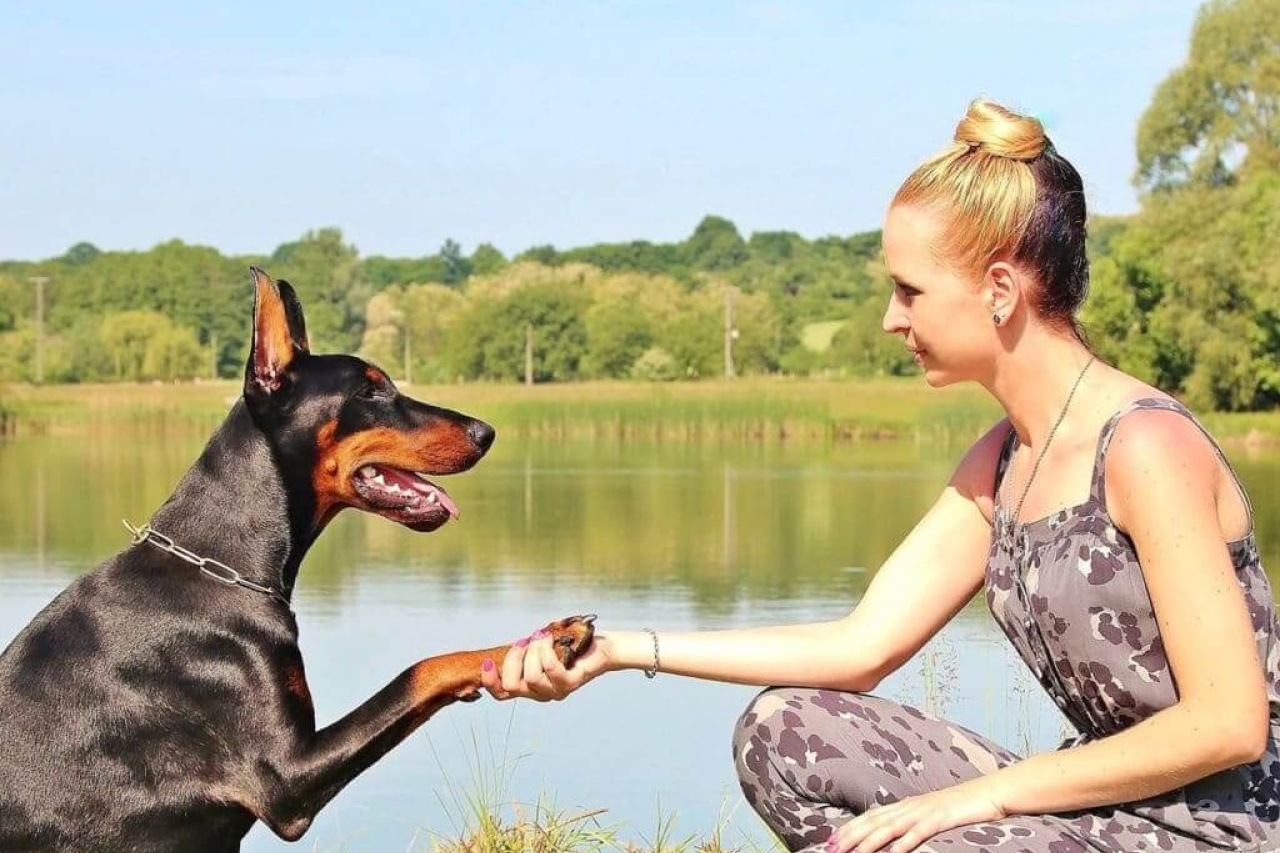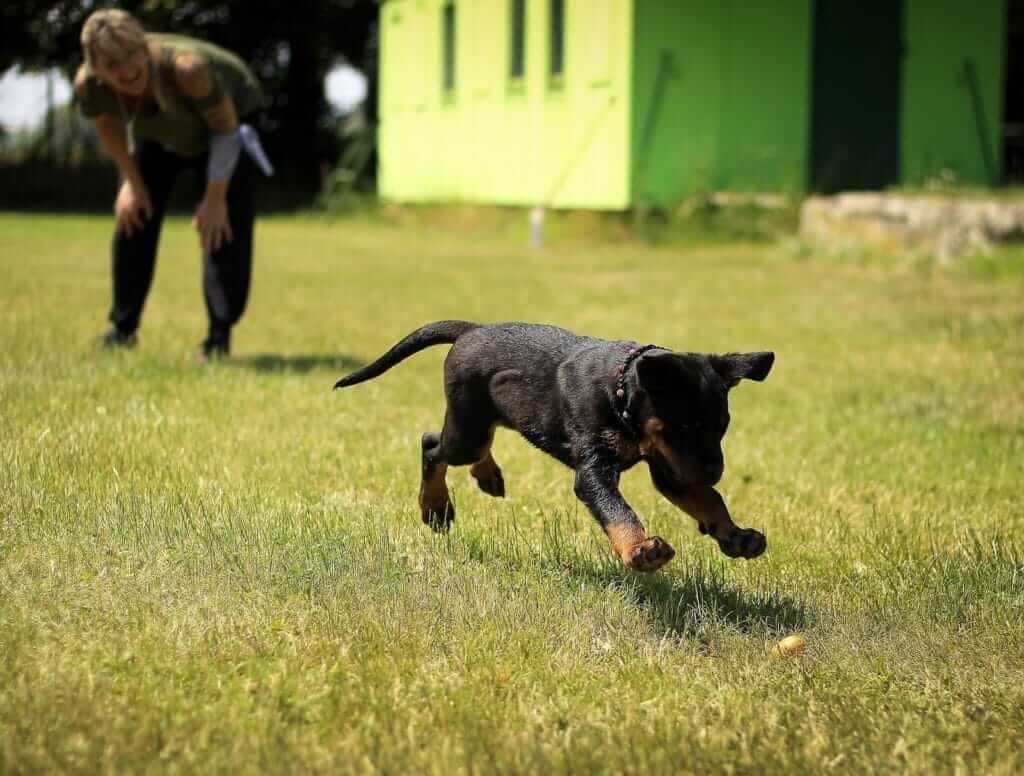
How to Become a Dog Trainer in 3 Simple Steps
Working hands-on with dogs all day, every day sounds like a dream come true for most of us. If you adore dogs and are passionate about animal behavior, a career as a dog trainer might be the perfect fit for you. Being a professional dog trainer is a lot more complicated than teaching the family Labrador to sit, though. You'll need to get educated and spend hours working with dogs so that you have the experience necessary to be considered a professional. Then, you'll need to become certified if you want others to actually trust you with their beloved pets. The good news is: Dog training is a booming industry with plenty of opportunities for growth. Read on to discover how to become a dog trainer in three steps so you can launch your dream career.
Step 1: Educate Yourself
Dog training is a specialized field, so becoming a professional trainer will, of course, require education. Some dog trainers are entirely self-taught, while others attend formal programs or schools. There are a few things to consider when it comes to educating yourself about dog training.
Your Personality
Before embarking on an educational journey to become a professional trainer, think about yourself for a moment. Dog training is about a lot more than having a certain knowledge base. Do you have the personality to train dogs every day? A dog trainer must be extremely patient, and you must be flexible and willing to adapt — and that's just when it comes to the dogs! Remember that you'll be working with people just as often as you'll be working with dogs — dog training falls under the service industry umbrella, after all. If you're not a people person, a dog training career might not be the right fit.
Online Learning
If you're considering becoming a professional dog trainer by going the self-taught route, online learning is your best bet. There are plenty of resources out there to educate you on dog behavior, the history of dog training, dog healthcare, dog obedience, and everything else you'll need to learn to become a professional. Just make sure you're using quality, vetted resources so that you know you're getting the best information. Do some research to discover online training courses that can help you learn what you need to know. Online training programs are a good idea because they will test your knowledge and hold you accountable for your education.
Formal Education
Your other option is to attend a dog training school and go through a formal education program. Depending on your area, there may be dog trainer programs available through your local community colleges or through local animal shelters, veterinary clinics, or pet stores. Factor in the cost, length, and end results of attending these training classes before making your final decision.
Step 2: Start Training Dogs
 Just as you can't become a chef without cooking food, you won't be able to become a professional dog trainer without, well ... training dogs. Most likely, you'll start training dogs in some way or another during your education, but you’ll still need to really dig in and start working on your hands-on training skills in the real world.
Just as you can't become a chef without cooking food, you won't be able to become a professional dog trainer without, well ... training dogs. Most likely, you'll start training dogs in some way or another during your education, but you’ll still need to really dig in and start working on your hands-on training skills in the real world.
Training Other Dogs
Have you trained your own dog to follow basic commands? That's great, but in the world of professional dog training, you'll be working with dogs that you aren't already familiar with. It's important to practice training other dogs because that's what you'll be doing every day once you turn pro. There are many different specializations you might teach when training a dog, and yours will depend on your education, clientele, and personal preference. Some examples are:
- Basic dog commands like sit, stay, come, heel, and lay down
- The Canine Good Citizen test
- Obedience training
- Agility training
- Rally training
Start training dogs as soon as you can so that you can work on your real-world training skills. Remember: Training dogs in real life is very different from studying animal behavior in a classroom or online. Different dogs might respond to the same training patterns in different ways, causing you to make small adjustments to your routine. One of your furry students might not stop barking, no matter what you do. A dog parent might prefer that you try a certain training method, even if you would rather take another approach. The sooner you start training dogs in person, the sooner you’ll get used to the flexibility needed to address these situations. You may be able to volunteer at a local animal shelter to help train dogs there or serve as an apprentice at a training facility. You can even try securing an entry-level training position at a facility near you — it's a great way to gain experience, whether you want to continue working for a company in the future or strike out on your own as a business owner.
"Training" Other People
Remember: A big part of your job as a professional dog trainer is actually teaching other people how to train their own dogs. Work on imparting the knowledge and skills you've learned to other people. If you plan on running your own dog-training business one day, you might even try coming up with materials to give your clients, like training instruction cards or "cheat sheets" to remind dog parents of the best tips and tricks for teaching basic commands.
Step 3: Seek Certification

If you really want to take your dog training to the next level, you'll want to become certified as a professional dog trainer. Currently, a certification isn't required in the United States to be a dog trainer, but having certification will definitely give you the authority you need to be successful. Dog parents will respect and trust you as a certified professional, and you'll have a leg up on the competition. Plus, you'll be more attractive to pet stores, vet clinics, boarding and grooming facilities, or small training businesses who are looking to hire a dog trainer.
Becoming a Certified Trainer
The gold standard for becoming a certified dog trainer is to gain certification through the Certification Council for Professional Dog Trainers (CCPDT). By meeting the standards of this certification and passing the computer-based test, you'll become a CPDT-KA (Certified Professional Dog Trainer-Knowledge Assessed). You’ll be required to undergo continual education efforts to keep your certification, so it's a great way to keep your training skills sharp. It's also a good idea to become a member of the Association of Professional Dog Trainers, or APDT, the premier organization of individual dog trainers in the U.S. Being a member will keep you up to date on all things dog training, and it can even help you find job opportunities. To become a member, all you have to do is pay a small annual fee.
The Next Steps
You're educated, experienced, and maybe even certified. Where do you go next? You can either seek employment as a dog trainer at a training facility, animal shelter, vet clinic, grooming and boarding facility, or another business of some kind, or you can start your own business. Many dog trainers launch very successful small businesses. If you're thinking about going out on your own, make sure you take into account the same considerations that you would make for any kind of small business venture — things like your target market, geographical area, startup costs, overhead costs, tax implications, and more will all play a role. You might also consider doing dog training on a part-time basis, perhaps during nights and weekends. It's a great way to keep up your skills while making a little extra money at the same time. Plus, you get to meet a lot of adorable dogs!
How to Become a Dog Trainer Right Now
Whatever you decide to do with your passion for dog training — even if you just do it for fun — don't give up on your goals. Sign up for an online course so you can get started on learning how to become a dog trainer. Training dogs is a rewarding, essential, and fun activity, whether or not you make it a career. Let's face it: Who wouldn't want to spend as much time as they possibly could around canine companions?




























